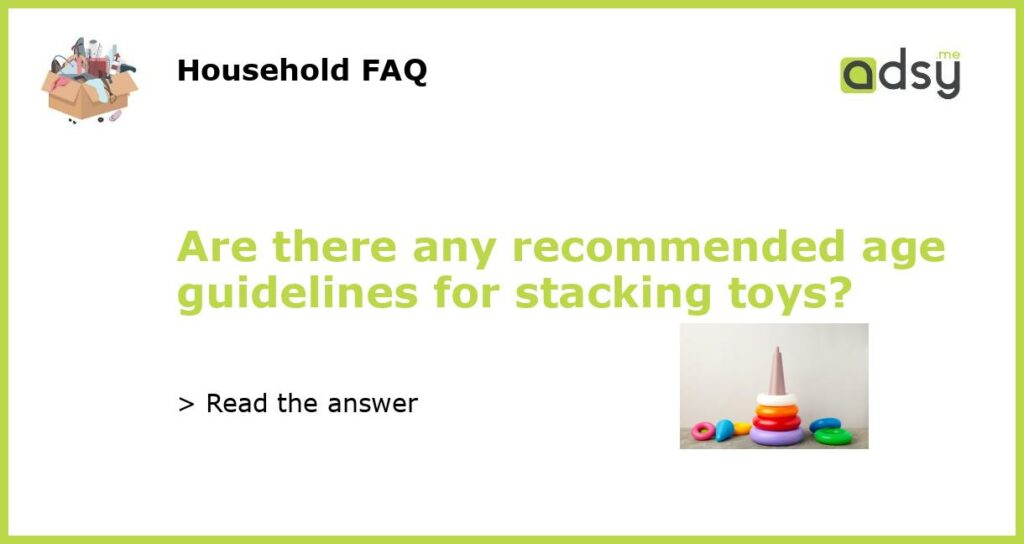Why Stacking Toys Are Beneficial for Child Development
Stacking toys are a popular choice for young children as they not only provide entertainment, but they also have numerous benefits for child development. These toys typically consist of blocks or rings that can be stacked on top of each other to create various structures. While stacking toys are suitable for children of all ages, certain age guidelines can help parents choose the most appropriate toys for their child’s developmental stage.
The Benefits of Stacking Toys
Stacking toys offer several advantages for child development. Firstly, they promote fine motor skills as children learn to grasp and manipulate the blocks or rings. This improves hand-eye coordination and finger dexterity. Additionally, stacking toys enhance problem-solving skills as children experiment with different arrangements to create stable structures. This encourages critical thinking, spatial awareness, and logical reasoning.
Furthermore, stacking toys help develop cognitive skills. As children stack the blocks or rings, they learn about concepts such as size, shape, and balance. This builds their understanding of basic mathematical concepts. Stacking toys also foster creativity and imagination as children use the blocks or rings to build unique structures or create imaginary scenarios.
Stacking toys are also beneficial for social and emotional development. When children play with others, they learn to take turns, share, and collaborate, promoting positive social interactions. Stacking toys can also be used as a tool for language development. Parents can engage in conversations with their child, describing their actions, and introducing new vocabulary related to the stacking process.
Recommended Age Guidelines
While stacking toys can be enjoyed by children of all ages, there are certain age recommendations to consider when choosing the right toy for a specific developmental stage.
For infants and toddlers (approximately 6-12 months), stacking toys should be simple and safe. Soft, lightweight blocks or rings are ideal at this stage. These toys should have a larger size to prevent choking hazards. Stacking toys for infants and toddlers may also include different textures or sounds to stimulate their senses.
For older toddlers and preschoolers (2-4 years old), stacking toys can become more complex. The blocks or rings should be smaller and offer various shapes and colors. This allows children to explore patterns, sorting, and sequencing. Stacking toys with additional features, such as number or letter recognition, can also be introduced at this stage.
As children reach preschool and kindergarten age (4-6 years old), they can handle more complex stacking toys. Sets with multiple pieces, such as building sets or magnetic blocks, can challenge their creativity and problem-solving skills. Stacking toys that incorporate themes, such as animals or vehicles, can also engage their imagination.
It is important to note that these age guidelines are general recommendations. Every child develops at their own pace, so it is crucial for parents to observe their child’s abilities and interests when choosing stacking toys. A child who shows advanced motor or cognitive skills may benefit from more challenging stacking toys, while a child who is still developing these skills may require simpler options.
Stacking toys provide numerous benefits for child development, including improved fine motor skills, problem-solving abilities, cognitive development, and social-emotional growth. While there are recommended age guidelines for stacking toys, it is important for parents to consider their child’s individual abilities and interests when choosing the most appropriate toy. By selecting stacking toys that align with a child’s developmental stage, parents can promote their child’s overall growth and enjoyment of playtime.






